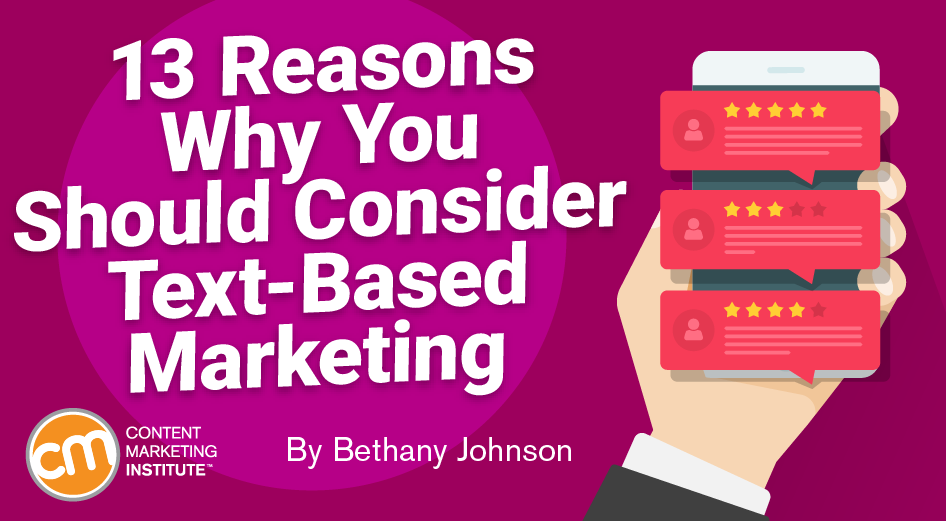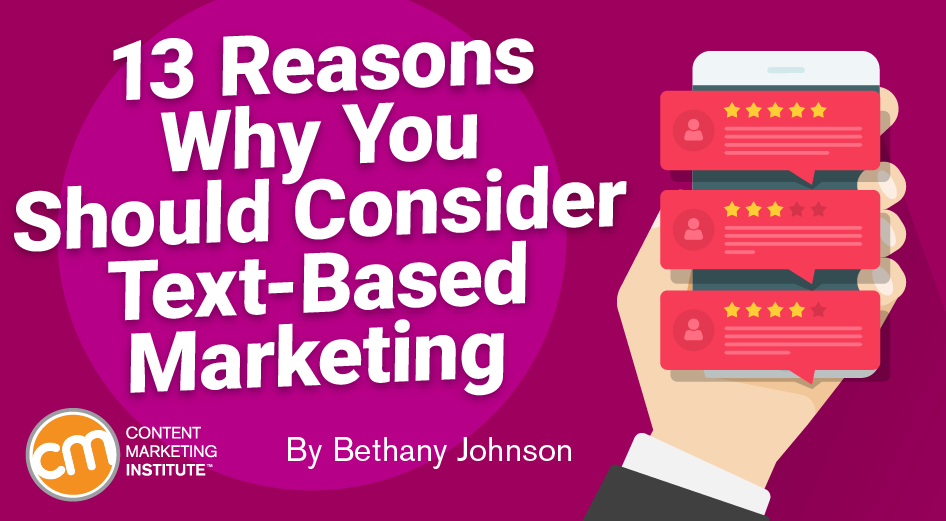85% of mobile device users prefer a text from businesses over phone calls or emails Turns out, when given the choice, customers would rather engage via SMS messaging than by way of voice or email — a surprising fact given what many marketers expect. Users don’t need to download a new app or learn to navigate a new interface These days, each new channel comes with a learning curve for both brand and user. Users don’t even need a smartphone or internet access Whether by choice or necessity, some people carry simpler mobile phones. Receiving a text, opening it, and considering a response puts users in an active role. With text messaging, the customer decides when to interact. Quiq’s 2017 research shows the majority of users would pay more for a product or service that comes with text support, and feel more positive toward brands that offer mobile messaging. 1 most effective channel for most marketers,” Ardath says. I just had breakfast, things are going well, and I say, ‘10, yeah, I’m a happy camper.’” The Fairmont immediately replies, asking her to rate her stay on TripAdvisor. “Context is really important, especially when you’re interacting through someone’s smartphone,” Ardath says. As Mark Zuckerberg has said, “You should be able to message a business like you message a friend.” What he did not say is that businesses should have access to you the way your friends have access to you.

The urgency and intimacy of text-based marketing make it attractive to businesses. But it’s those same qualities that make SMS communication from a brand especially risky.
However, when done strategically, respectfully, and in a contextually relevant way, Ardath Albee, CEO of Marketing Interactions Inc., says the profitable benefits of SMS marketing easily supersede the most common pitfalls of this unique channel.
She presented on the topic at the Intelligent Content Conference this year, Automation Isn’t Just for Email: Why Messaging Can Be the Conversation that Counts.
Before acknowledging and addressing the sometimes disastrous risks of SMS (short message service) and MMS (multimedia messaging service) marketing, Ardath shares 13 reasons the medium can (and often does) outperform other channels and automated tactics.
1. Personal devices are more personal than ever
“People are looking at their smartphones out of boredom,” Ardath points out. Nearly a third of millennials globally check their phone screen at least once every five minutes without being prompted by an alert or notification, according to KPMG’s 2017 Me, My Life, My Wallet Report.
2. Texting is the most-used mobile device feature
The only thing more personal than the phone itself is the standard messaging app, where users spend more time than anywhere else on their device. Ninety-seven percent of all smartphone users text their contacts at least weekly.
3. 85% of mobile device users prefer a text from businesses over phone calls or emails
Turns out, when given the choice, customers would rather engage via SMS messaging than by way of voice or email — a surprising fact given what many marketers expect.

4. B2B brands hesitate to integrate texting, creating a low-competition vacuum of opportunity
Ardath explains that your business clients are individual consumers who receive text marketing from B2C brands during off hours (think puppy food, car insurance, or local restaurant deals). Why, then, wouldn’t they expect professional vendors to target them with productivity tools or services throughout the workday?
5. Users don’t need to download a new app or learn to navigate a new interface
These days, each new channel comes with a learning curve for both brand and user. Texting doesn’t require any new skills.
6. Users don’t even need a smartphone or internet access
Whether by choice or necessity, some people carry simpler mobile phones. They don’t (or can’t) consume web-based data when away from Wi-Fi. They can’t consume infographics, streaming audio, social updates, and blog posts, but they can receive your texts.
7. Text messaging can be used at every stage of the buyer’s journey
To visualize this, Ardath encourages marketers to think about mobile messaging from different perspectives – marketing, sales, service, etc. “You could use text messaging to engage at every stage of the buying process, which becomes more and more important when we’re challenged to create better and better customer experiences across our entire customer relationships,” she says.
8. Texts are interactive
Users opt in to initiate the conversations. Then, keywords keep the interaction dynamic. Receiving a text, opening it, and considering a response puts users in an active role.
9. SMS marketing is one to one
Often, marketers time campaigns in hopes of serving audiences right around the time they need that touch. With text messaging, the customer decides when to interact. This takes all guesswork out of the “right people at the right time with the right content through the right channel” formula.
10. Text exchanges provide customer insights for contextual relevance
Relevance is both the most valuable factor in automated marketing and the hardest to determine. Texting with a customer exposes context clearly and accurately on demand. When a person replies “ROI” in the scenario below, for example, you know what information they want and that they want it immediately.
…

COMMENTS